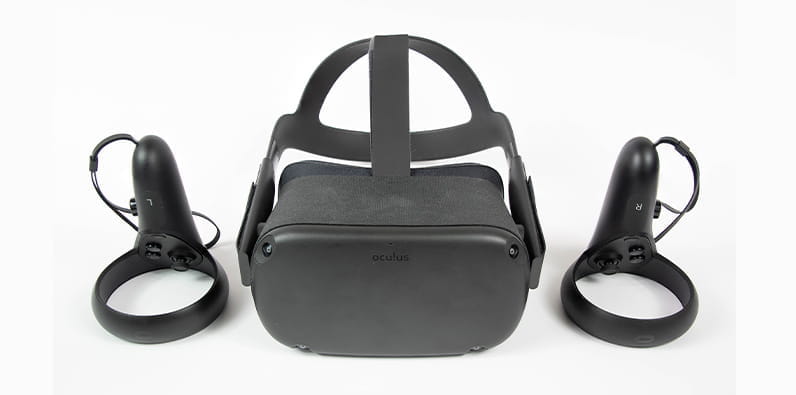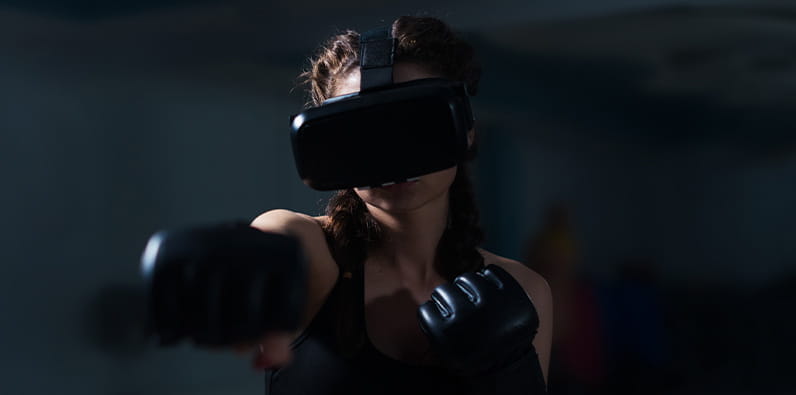Can VR, eSports and Sports Co-Exist?
The new virtual reality gaming experience is a result of the latest tech transformation bringing it all closer together. This new invention intends to make the future of eSports more of physically active involvement. Sports is the next thing after VR casinos to be united with the technology and create a new perception for athletes and players.
That process has already begun, and the industry is slowly incorporating virtual reality by launching one VR eSports league after another. Even though many eSports athletes still hesitate to use the new tech, the tendency is that VR is here to stay and co-exist with sports and digital gaming. It is used more and more by people in their daily chores. All you need to do is put the headset covering your eyes and ears and act through the controllers.
eSports Virtual Reality Can Make a Difference
VR eSports has one advantage that other types of digital video games will never have – it can appeal to every kind of athlete. As some are fast in making decisions, plus have quick reflexes, others have what you would expect from a professional athlete – strength, dexterity and stamina. That is exactly what the physical nature of eSports virtual reality athletes looks like. It involves more standing and moving, which creates a different type of players.
More and more gamers are seeing the benefits of virtual reality. As eSports continues to grow, the games will require more physical activities like jumping and climbing. That way, attracting more eSports stars into loving the ability to use their athletic gifts while playing will boost VR popularity. Some aspects need a bit more time to adjust, but more on that in a bit.
VR eSports – Why Not Fully There Yet?
The question of why VR is not yet popular among eSports is related to several aspects of the business. There are bumps on the road, which kind of hold back virtual reality from being trendier and more well-known. There is more to it than just the technology. Providers need to figure out how the broadcast will happen and how costly everything related to VR eSports will be.
When you think about it, the gear itself is still expensive for mass usage. How the giants in digital gaming are responding shows a step in the right direction. See our list of VR details that need some work in order to help the gaming industry grow:
1. Games
The leaders in the digital gaming category at the moment are Dota 2, League of Legends, CS: GO, Fortnite and Call of Duty. None of them has a single virtual reality component. That means new titles should be created to be played in VR more. The lack of popularity to the general public makes VR hardly reachable by the casual fans.
The idea is more of the big names to participate and to make the events accessible. The most notable VR eSports league is part of ESL gaming and is called The VR League. That shows the way ESL thinks about virtual reality, and that has a place in digital gaming. There is a downside, though – the games played. The fact that they are new to fit the novelties makes them unknown. For example, the current VR League titles are Onward, Echo Arena, Space Junkies, and Echo Combat. Many say that the biggest hurdle facing VR is the need of games, designed for the general public to watch and enjoy.
2. Cost
The VR system is quite pricy at the moment. The mass player and spectator find it hard to acquire all the necessary gear. That leads to fewer people buying and playing VR eSports, which slows the process of falling in love with the concept. Players use mainly consoles, PCs and even mobile devices. That is what makes eSports so accessible. Everyone can try it and feel like winning big is on the table. When you think about it, everybody has access to at least one video game. In the end, they can easily imagine playing their favourite games professionally.
3. Technology
The limitation of the technology is another thing that virtual reality developers need to overcome. Even if a player wants to try VR, their feedback explains how sore their eyes are after 20 minutes of playing. As we all know, an eSports athlete has to train for about 8 to 12 hours per day. When you compare that to the 20 minutes VR time, there is no benefit for the player. That problem can be resolved with the evolution of the product, which is already set in motion by more people and companies involved. One of the popular examples is Intel Gaming. The lead of the company Scott Gillingham said in an interview, that VR and eSports could co-exist.

4. Money
Eye soreness is not the only thing that slows eSports athletes to adapt to VR. The popularity of this new tech is not high enough to reflect on their bank accounts. Pro gamers support themselves financially through their corporate sponsorships, as well as their streaming feeds on YouTube and Twitch. Popular games are the primary key to their wealth because the consumers want to see the top athletes play some of the most popular eSports games like Dota 2 and League of Legends.
They are known, thrilling and keep the excitement going. In case an athlete decides to switch to a VR eSports, there is a good chance for their followers to stop following them. That leads to less viewership and popularity, therefore less money. The VR tournaments prize money is also significantly less. Players need to carefully think through the financial aspect, before deciding to switch game scenes.
5. Broadcasting
Presenting a VR viewing experience happens to be a new kind of challenge for the industry. It is yet to be figured out how to broadcast eSports virtual reality tournaments. The traditional eSports viewing leads the spectator to what is important and what to focus on, which offers a relaxing atmosphere without missing a single detail. With VR, people need to decide what to focus on and have to physically turn their heads around. Viewers will prefer a guided experience. They prefer to have the opportunity to control what to watch, which differs from VR, where the viewer is more restricted on what to watch at any given moment.
VR eSports League – The New Generation
VR needs more popularity, and to do that, the industry needs to get more famous game developers involved. The dedication to a team or company plays a significant role in this business. Viewers and fans are loyal and ready to try whatever their favourite developer is offering. There is not a new game yet, or one that we know of, that could flip scales for the fans. That is what keeps developers evolving and trying new products. They design and create games, when the organizers are trying to build up a notable momentum by organizing specific VR leagues. Mimicking some of the best eSports tournaments and their structures, the virtual branch of online gaming had given a fresh start to some exciting competitions:
| VR League | Plays a leading role in virtual reality and has been active since 2017. The main supporters and sponsors are the might Intel and Oculus. They provide investments and technology. That had made it the first and biggest VR eSports league. They could use an influential ambassador to keep the fans excited about their product. |
| Virtual Athletics League | Fully embracing VR in a unique way, VAL started in 2016. They solely operate out of virtual reality arcades. They try to keep the unique atmosphere with all the different video games. Now, over 160 VR arcades participate in the league worldwide. They are open for the public which makes VR more reachable and there, you don’t need to play with a personal gear. VAL became official in 2018 after signing sponsorships with HTC Esports and HP, Inc. |
| Collegiate Virtual Reality Esports | A young league that needs quite a bit of growth but definitely has potential. Their first season was in 2018. It was a huge success. The league’s goal is to create a sports program at universities for VR athletes. That way, students can participate in the formed teams for their universities and win scholarships in the future. There are none for now because the league is still too young. However, experts predict a steep rise for that one in the near future. |
Future of eSports – The Inevitable Evolution
The shape, which VR eSports will take in the future, is an interesting topic to ponder. Nonetheless, a new generation of athletes will emerge. They will be exceptionally agile, lean and dexterous. Their reaction time, as well as eye-hand coordination, will be through the roof. The competitive experience with this new virtual reality eSports niche will be the main engine of the growth of the industry. We will witness a long-lasting marriage between mainstream VR competitive sports and traditional sporting values. The industry had made a huge step forward with implementing virtual sports casinos and bets in the first place. However, they still need to find a way to implement recruitment of top game developers, more leagues and VR’s ability to attract a different type of athlete.
Frequently Asked Questions about VR eSports Technology
The topic related to the future of VR casinos and VR eSports is yet to be widened. There are numerous questions about the technology, prices, competitions, which games can be played in VR and so on. We have managed to summarize all that in a Q&A section. The data is straight to the point and offers one more look at the article, where things are explained in detail.
